Vital Interactions
The Chemistry of a Championship Dental Team
ABSTRACT
It has been stated by many in history who are known for their wisdom that the quality of your life is determined by the quality of your “RELATIONSHIPS.” Low quality relationships lead to a low quality of life! High quality relationships lead to a high quality of life! The quality of your relationships in turn is determined by the quality of your “COMMUNICATION.” This correlation between our communication, our relationships, and our overall satisfaction in life is powerful yet it very often it doesn’t get the attention it deserves. Most human resource experts will tell you that “happiness in the workplace”has a huge impact on your overall effectiveness and success as a team. Just think; the average dentist spends 8–10 of his or her waking hours each work-day at the office. This can be extrapolated to mean that for the average clinician most of your non-sleeping time Monday to Friday is actually spent with your co-workers/employees. As a result; the quality of your relationships with these people is going to have a dramatic impact on your overall personal happiness and professional effectiveness. This article will examine strategies for minimizing and managing conflict as a means to strengthen team harmony and success.
It is extremely important to get along well with the people you spend most of your time with because how you feel while you are around these people not only impacts your performance at work, it also impacts other areas of your life. Some might say that they can leave work at work and home at home. But is this really possible? For example; when you are in love with someone can you file your love for them away when you arrive to work in the morning and by the same token when you experience a human dynamic tension at work can you suddenly eject those feelings and keep them from coming home with you? No way! Your feelings follow and stick to you like glue. Your heart stays in your chest where ever you go. Our intellectual mind might tell us otherwise. But at the core of our essence we are human and contrary to popular belief human beings are not really intellectual logical creatures. Human beings are “EMOTIONAL CREATURES” who use logic and intellect to justify and understand their emotions. This concept is also true of our patients when they make buying decisions in our practice. Patients shop with emotions (their hearts). They then use logical reasoning to justify their buying decision. This is why it is important to develop and nurture a positive emotional climate in our workplace. Emotions are powerful. Emotions are infectious. Emotions affect everyone including our patients. How we feel while we do what we do is at the core of our effectiveness. Emotions affect our ability to lead, to sell, and to feel united and passionate about our service. For most dentists, however; the concept of “leading people and keeping them emotionally united and aligned” was not something they signed up for when applying to dental school. Many clients tell me they wish for workplace harmony but they just don’t have the time, the energy, or the patience to babysit the emotional climate in their practice.
I guess it would help to look at team chemistry as more than just “babysitting” emotions. Dentistry is not only a medical profession that serves the human condition it is also a business where influencing customer’s decisions and profitability are a necessity. Your team’s level of unity plays a huge factor in their ability to collectively influence customers. Imagine coming to your office in the morning and feeling like you are surrounded by a bunch of enthusiastic confident positive people who like each other, support each other and are all working together on behalf of a future they have all committed themselves to. Is this possible? If it is already happening in your practice, can it happen at a higher level? It is my experience that it can. At the end of the day everything we experience in life is related to people in one way or another. Relationships in the dental office can be a source of daily misery and frustration or they can be a beautiful thing that fills your heart and soul on a daily basis. Just think of a very emotional time in your life where you felt a strong emotion such as happiness, sadness, anger, or fear. If you look at it carefully the situation probably had something to do with or involved other people. People affect people in a big way. The Greek philosopher Plato said that the greatest need of the human soul is the need to feel heard, understood, and appreciated by others.
Now let’s examine the emotional climate in your practice for a moment. Are team conflict and egos getting in the way of your goals? Are differences and selfcentredness dividing your team and causing you headaches? Are tensions and adversity weakening your team and its performance? Leading organizations today are realizing that it’s difficult to achieve the level of teamwork needed to really excel as a business unless you first deal with the all too common destructive behaviours that fuel unresolved conflicts in the workplace.
Far too many people trade their life, and a bit of their soul, for a paycheque. They tolerate endless hours of meaningless work, disappointing relationships, conflicts, gossip, and frustration so they can have fun on the weekend and during their two-week vacation. Similar frustrations hold true for managers and practice owners; far too many go home at night feeling frustrated and disappointed because of the conflicts at work, the lack of creativity and productivity, and the loss of progress and profits. For many in the game of dentistry this is what they endure and live with each day at the office. Keep in mind these conflicts do not just exist at an adversarial level. You can like a co-worker and still experience unmet expectations or little discourtesies that fester and build frustration into your work environment over time.
Things don’t have to be this way. Feeling connected and getting along is the most important ingredient on the path to functioning as a high performing team that achieves collective results. Before game 1 of a recent 7 game NBA finals series the announcer, in an interview with retired basketball legend the great “Doctor J” Julius Irving, asked him his pick to win the series and what he felt the keys to victory would be. Doctor J’s response was compelling. In an impassioned and spirited pre-game tone he said either team can win the series, “the key to victory will be 10 players who play in sync with each other, in sync with the coach, in sync with the organization and with one goal.” Wow; is this requirement any different when we are playing the game of dentistry with our coworkers? Whenever we come to work, we’re in a sense, suiting up and stepping on a playing field with our teammates. Each person in the practice plays an important role in the big picture of what we are trying to achieve for our patients and as a business in our community. Our collective level of unity and connection will have a tremendous impact on our effectiveness as a team. Connection in the workplace will significantly affect a team’s morale, stress, and the level of fulfillment people draw from their role in the practice.
If we call unity the engine of team’s potential, then communication would be the fuel. As a practice mastery coach the most common desire I hear from owners, managers, and team members alike is that “we need to be more united … more connected.” It is relationships and communication challenges that seem to be a common recurring theme that people wish to develop within their business. Today people are realizing more and more that to really accelerate the growth of your business you must first grow the people within your business; then together as a more synchronized united team you can take your business anywhere. In my day-to-day coaching practice, my new clients and I go through a discovery consultation where we explore their circumstances, opportunities, and desires for growth and development. Then prior to beginning the implementation process I candidly interview each member of the team to discover what is going on in the hearts and minds of the people who will be at the centre of all positive change initiatives. As soon as I begin the interviews an often hidden world begins to reveal itself. The underlying team dynamics, relationship issues, and communication challenges begin to surface. These discoveries often come as a surprise to people especially to practice leaders and managers. I frequently hear things like … “I had no Idea this was going on” or “I had no idea they felt this way.” Sometimes it’s just one person who is bringing down the morale and operational ability of the entire team but more often it’s a series of cliques and subgroups that have evolved and are fragmenting the team’s effectiveness; the most common one being clinical team versus business team. The question we must explore is “why do these conflicts occur in the first place? If we know they fragment the team into sub-groups, reducing cooperation and unity; why do we let them happen?” People often say to me “we are all really good caring people who like each other yet we experience these co-worker interpersonal issues.” It is important for us to understand that you don’t have to be a bad person or have bad intentions to get caught up in a conflict. The dental practice by design is a very intimate setting where people with diverse backgrounds and unique personalities are required to communicate and work together at a very interdependent level. The things we do the things we don’t do and the way we do them have a significant impact on our coworkers ability to perform their jobs smoothly and at a high level. The major advantage a team has over an individual is its diversity of knowledge, skills, views, and ideas. Unfortunately with this diversity comes potential for conflict. Conflict arises from our differences. When highly skilled individuals come together at work to play a team game their differences can contribute to the creation of conflict. This conflict immediately begins to emotionally hijack, fragment, and divide the team. However, we must understand that this so called conflict in work teams is not necessarily destructive or a bad thing. It can lead to innovative new ideas and approaches to operational processes and challenges. Conflict, in this sense, can be considered positive, as it facilitates the surfacing of important issues and provides opportunities for people to strengthen their connections while developing their communication and interpersonal skills. Conflict only becomes negative if it is left to fester and escalate to a point where people begin to feel defeated, combative and territorial (my job-your-job).
It is my observation that conflicts usually arise from communication failures which include poor listening skills; insufficient sharing of information; differences in interpretation and perception; and nonverbal cues being ignored or missed. It is important to understand that regardless of the scenario conflict is not an external set of events that we have the misfortune of being exposed to. It is more of an internal process that is driven by our thoughts and attitude. We “Fuel” conflict. People create conflict based on how they choose to interpret a situation and based on the approach they choose to take when dealing with it. It has been said that “the greatest gap in nature is the gap between one man’s thinking and another man’s thinking.” I think the problem arises when we begin to attach our diverse needs and alternate viewpoints to our emotions and then begin to judge others accordingly. People can do this to a point where they become adversarial towards anyone with viewpoints that deviate from theirs.
It’s easy to win or dominate a disagreement at the expense of team unity and connection; especially if you hold a position of authority! All you have to do is not listen and communicate more strongly than the other person and you win. But do you really win in the grander scheme of things? The key to connecting positively with others is rooted in being willing to explore beyond our personal points of view so as to better understand how others are experiencing a particular situation. The question we should all ask ourselves is “do you want to be right or do you want to be happy.” If your goal is to be right then your approach will be to shame, blame, label, and prove the other person wrong. If your goal is to be happy then your approach will be to express your needs and viewpoint while sincerely attempting to understand the needs and viewpoint of the person you are dealing with. The problem is that most people, especially when they are stressed; tend to get caught up in their favourite subject (themselves). This personal bias hinders meaningful productive conversation with others and leads to the polarization of hearts and minds. Our personal bias causes us to “judge people by their behaviour; meanwhile we are judging ourselves by the intentions of our behaviour” without fully understanding its actual impact on others. If you really want to solve a difficult situation you must take the time to listen and to acknowledge the other persons intentions and view point. Be flexible on the road you take to happiness!
When a situation arises with an employee or peer it requires fuel before it can become a conflict. That fuel source is energy, time and attention. Let’s look at a simple 10 step process we can follow in order to resolve conflicts quickly thereby preserving our energy, time and attention and for the purpose of doing more positive and productive things.
- Ask yourself, what meaning have I attached to this … could this mean something else?
- Ask the person for their help.
- Ask the person for permission to discuss your concerns with them.
- State the situation as you see it without using destructive labels to describe their behaviour. Describe the action you have issues with without labelling the behaviour (i.e., you are lazy/you are inconsiderate).
- Explain their behaviours’ impact on you while showing show respect for their intentions. “This affects me by _________.I understand this is not your intention because I know who you are.”
- Ask them to help you understand and solve this situation.
- Listen deeply and acknowledge their viewpoint. Even if you don’t agree, you are merely acknowledging not agreeing. In most cases the more heard and understood you make them feel the more deeply they will receive and accept your viewpoint.
- When these steps are followed you create a stage on which to discuss a solution; if a solution is necessary. In the very least you can walk away understanding each other better which usually causes people to behave in ways that are more supportive of each other’s needs.
- If specific resolution is required continue on by making a win-win behaviour modification agreement.
- Define the heart/root of the problem not the surface
- Brainstorm ideas c. Eliminate ideas either party feels won’t work
- Clarify remaining ideas e. Iron out details … who/when/what/where/how f. Evaluation … revisit this in the future
- Thank each other for caring enough to give feedback and to listen and understand each other.
Example/Sample Process
- You: I need your help with something! Can we talk? When you _________ I feel ________. It affects my role__________. I know that is not your intention because I know who you are! Can you help me understand or solve this?
- Them: I’m sorry that is not my intention…I don’t mean_______. I do that because________. I didn’t realize__________.
- You and Them: Walk away understanding each other better or discuss and resolve follow up behavioural modifications required to improve things for both parties.
- Them: ”Thanks for letting me know.”
- You: “Thanks for listening!”
Now let’s look at 17 very powerful general guidelines for dealing more positively with a co-worker issue.
- Speak only to that person and discuss issues privately, not publicly.
- Address issues as soon as possible.
- Do not address issues while either person is in an emotionally charged state.
- Communicate your concerns openly and honestly without sugar-coating or nursing a silent personal agenda.
- Avoid being defensive. “LISTEN” to each other and acknowledge each other’s views even if you don’t agree.
- Don’t get personal. Avoid character labels and name calling … i.e., “you are lazy,” “you don’t think,” “you don’t care.” Focus on the behaviour not the person.
- Speak to one issue at a time. Don’t overload the person.
- Deal only with actions the person can change − asking the impossible only builds frustration into your relationship.
- Once you’ve made your point don’t keep repeating it. 10. Avoid sarcasm. Sarcasm signals you are angry at people not their actions and may cause them to resent you.
- Avoid playing “gotcha” type games.
- Avoid generalizations like “ALWAYS/NEVER.” They usually detract from accuracy and make people defensive.
- Present criticisms as suggestions or questions if possible.
- Don’t forget the complements.
- Don’t apologize for the confrontational meeting. Doing so detracts from it 32 Journal canadien de dentisterie restauratrice et de prosthodontie Deécembre 2008 and indicates you are not sure you had the right to express your concerns.
- Be able to forgive! Release yourself and your emotions from the burden of chronic dissatisfaction and frustration by practicing the art of forgiveness on a daily basis.
- Finally and most importantly; be aware of how you interpret situations. Always ask yourself, “what meaning have I attached to this … a positive one or a negative one?” “Could this mean something else?” “Do I have all the information?” Be prepared to listen.
Instead of “Conflict Resolution Skills” I prefer to call these “Connection Management Guidelines” since there is no “CONFLICT” until we begin applying the destructive behaviours that reduce important issues to a personal and adversarial level. The ultimate question we must always ask ourselves before a confrontation is “do I want to be right or do I want to be happy.” If your goal is to be happy then focus on staying connected. Communicate with a core desire to build cooperation into your relationship by learning more about each other. Connection Management is a proactive way of growing your business by strengthening the teamwork and unity of your people.
Bibliography
-
Harper G. (2004). The Joy of Conflict Resolution. Gabriola Island: BC: New Society Publishers
-
Alessandra T, O’Connor MJ,Van Dyke J. (1995). People Smarts. San Francisco: Jossey-Bass Pfeiffer.
-
Sanders T. (2005). The Likeability Factor. New York: Random House.
-
O’Neill M. Transform Stress & Conflict into Growth & Change. (Audio CD). Available at: http://www.maryoneill.com/ audio-seminar-series.html.
-
Goleman D. (1998).Working with Emotional Intelligence. New York: Bantam Books.
-
Goleman D. (2007).Social Intelligence. New York: Bantam Books
-
Shapiro S, Schefdore R. Better Service Better Income Better Dentistry.
-
Homoly P.(2006). Making it Easy for Patients to Say Yes. Charlotte, NC: Author.
-
Lund P. (1997). Building the Happiness Centred Business. Brisbane, Australia: Solutions Press.
-
Jameson C. (1999). Great Communication Equals Great Production, 2nd Ed. Tulsa, OK: Penn Well Publishing.

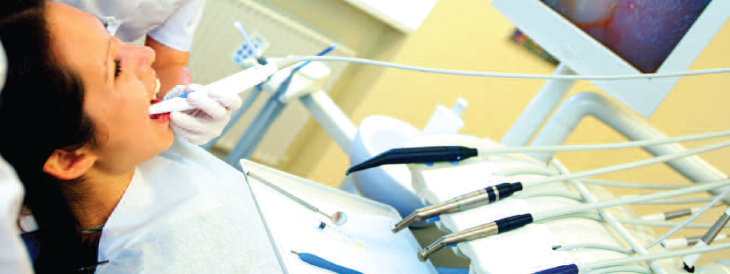
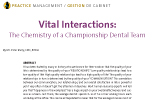 Originally Published in
Originally Published in 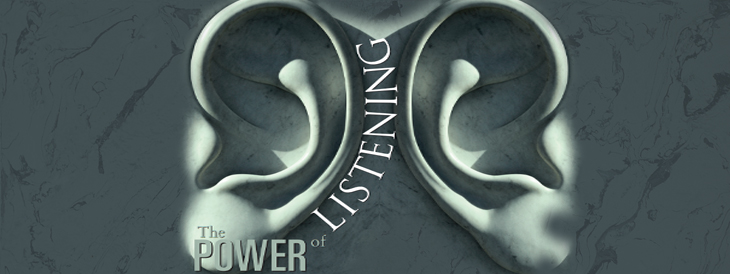
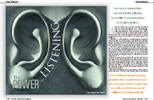 Originally Published in
Originally Published in 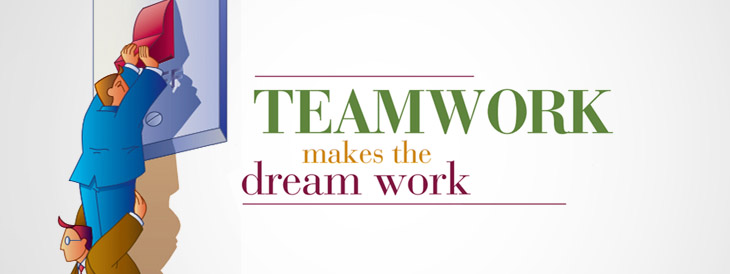
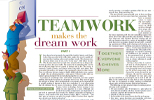 Originally Published in
Originally Published in 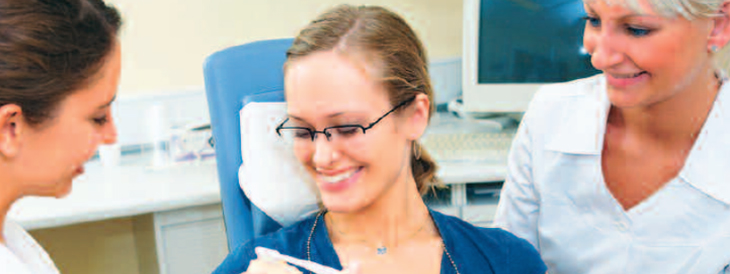
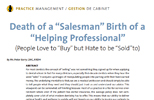 Originally Published in
Originally Published in 
 Originally Published in
Originally Published in